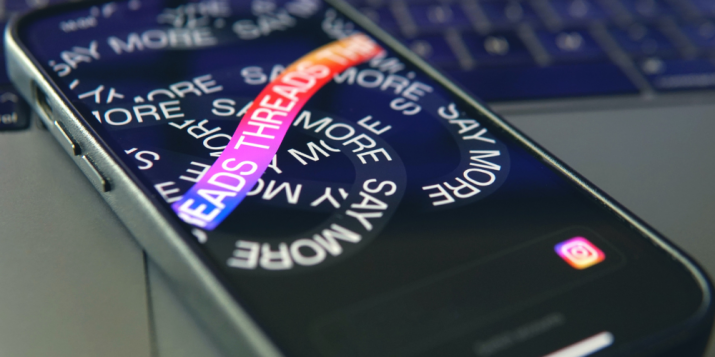
7 essentials for paid media plan with examples
Paid media has become a non-negotiable in demand generation. Its ability to reach targeted audiences, maximize brand visibility, and drive conversions is just what businesses need in an online world saturated with information.
B2B advertising expenditures in the United States totaled $32 billion in 2022, an increase from the $28.9 billion spent in the previous year. The data paints a clear picture – paid media is here to stay, and businesses are increasingly aware of its power. If your competitors aggressively invest in paid platforms, chances are – you should be, too.
While it can be daunting to inject money into new strategies, it’s crucial that you approach paid media as an opportunity rather than a leap into the unknown. The key is understanding the backbones of a strong paid media plan so you can use paid channels wisely and direct budgets to where you can best reach and convert your target audience.
Jump ahead:
- Examples of Paid Media for B2B Marketers
- Why Do You Need A Paid Media Plan in Digital Marketing?
- 7 Essentials for Paid Media Plans
- Take Your Paid Media Results to the Next Level with Oktopost
Examples of paid media for B2B marketers
There are three main categories of media: paid, earned, and owned. Paid media refers to advertising channels that require an upfront investment, while earned media is exposure such as press mentions and customer reviews. Owned media includes channels a brand controls, like its website and social profiles.

Source: Titan Growth
B2B marketers can reach their target audience directly through paid media. Some of the most popular paid channels include:
- LinkedIn Ads
- Google Ads (Pay-Per-Click)
- Virtual Events and Webinars
- Social Media Ads
- Sponsored Email Newsletters
Social media advertising stands out as one of the most popular and highly effective methods. With most B2B companies active on platforms like LinkedIn, Facebook, and Twitter, social media provides a natural landscape for connecting with professional audiences. The targeting capabilities on these networks also make it easy for brands to zero in on their ideal customers.
Why do you need a paid media plan in digital marketing?
In today’s digital landscape, a comprehensive paid media plan is essential for any results-driven marketing strategy. The right paid media plan allows you to reach targeted audiences, see quick returns through inbound leads, and optimize campaigns for maximum ROI. Unlike organic content, paid media offers complete control and flexibility to display your ads when, where, and to whom you want, which is crucial to getting your content in front of your target audience.
Along with these benefits, you can build brand awareness by increasing visibility and creating a competitive advantage. The most popular paid channels listed above offer options to start small and scale budgets up or down as needed. They also allow you to set clear campaign goals and metrics to provide tangible evidence of ROI and help you quantify business results. In today’s overloaded digital space, a planned paid media approach is indispensable for cutting through noise and connecting with those most likely to become customers.
Recommended for further reading
7 essentials for paid media plans
1. Define clear objectives and KPIs
Defining quantifiable objectives and key performance indicators (KPIs) is a great starting point for an effective paid media plan. With specific goals and metrics, you will know what you want to accomplish with your paid media campaigns. This helps focus initiatives, campaigns, ad creative, and budgets towards achieving those objectives.
Depending on what you want to accomplish with your paid media efforts and the channels you’re using, a few examples include:
- Increase website traffic by 20% over the next quarter;
- Boost conversions from paid social by 15% among custom audiences through lead gen placements.
Define these objectives and KPIs to align with your business goals and overall online brand strategy, and ensure they are specific, measurable, achievable, and time-bound.
2. Target audiences
Every organization has its very own ideal customer persona. Understanding and researching these different personas will help you target your paid efforts to reach those most likely to engage based on demographics, interests, and behaviors. Here’s an example of narrowing your target audience based on job title:
- Job Title Targeting:
- C-level Marketing Executives
- Vice Presidents of Marketing
- Marketing Managers
The key is to research your current customers and define specific audiences likely to convert based on marketing objectives.
3. Platform selection
It’s essential to determine which advertising platforms make the most sense for reaching your target audiences and achieving your objectives. Consider where your ideal customers are engaged online and which platforms provide the right capabilities and formats to connect with them.
For example, if your goal is lead generation, LinkedIn and Facebook’s detailed targeting options would allow you to reach professional audiences with lead ad units. Oktopost’s seamless integration with LinkedIn ads provides a powerful tool to amplify your audience reach and generate more high-quality leads.
4. Budget allocation
When constructing a B2B paid media plan, determining an overall budget and how to allocate spending across campaigns and platforms is crucial. Typically, the budget is set as a percentage of revenue or based on marketing objectives and Customer Acquisition Cost (CAC).
For example, you can break down a $100,000/year budget into $40,000 for LinkedIn-sponsored content to generate leads, $30,000 for Google Search ads focused on product keywords to drive site traffic, and $30,000 for remarketing to re-engage platform visitors.
For more tips on investing in paid social budget allocation, check out this “When to Invest in Paid Social” episode of the Radically Transparent podcast with Dekel Wiesman.

5. Ad creative
The ad creative in your paid campaigns can make or break results, so it’s crucial to craft compelling messages, images, videos, and text that speak to your target audiences. For example, LinkedIn-sponsored content with informative headlines like “5 Ways to Boost Sales Productivity” and relevant images usually performs well and can bolster your lead gen efforts.
Testing creative approaches like emotional messaging versus rational benefits, long-form versus short copy, and educational versus promotional content will aid you in determining what works best and why. The key is developing a variety of ad messages and formats that align to different parts of the funnel – from awareness to consideration to conversion – while consistently resonating with your target audiences.
6. Landing page optimization
Your landing pages are the last stop for converting paid media traffic, so it’s essential to ensure they are aligned with your ad messaging and enable visitors to take action easily.
For example, if a LinkedIn ad offers a guide on increasing sales, the landing page should focus on opting in to receive that content guide. The headline, images, and call to action should mirror the ad’s creativity. Optimization of these landing pages should match paid campaign objectives and remove any friction in the conversion process, improving lead quality and return on ad spend.
7. Reporting and analysis
Analyzing performance data and optimizing campaigns based on insights can help you maximize ROI from paid media. You can easily track key metrics like cost per lead, conversion rates, and target Cost Per Acquisition (CPA) against your objectives.
Platforms like Google Ads, Facebook Business Manager, and LinkedIn Campaign Manager provide robust reporting on granular metrics. Review weekly to assess what placements, audiences, and creative drive the most substantial results.
Through Oktopost, you can also easily see how your organic engagement rate stacks up against paid, which can be a great way to analyze performance on both organic and paid media.
Regularly analyzing paid media performance data uncovers optimization opportunities and insights that improve campaigns over time, ultimately driving more significant ROI from paid media budgets.
Take your paid media results to the next level with Oktopost
The growing importance of paid media in today’s digital landscape means B2B marketers can no longer rely solely on organic efforts. Following the strategic framework outlined here should help you maximize your paid media results and gain greater control and flexibility in reaching your most valuable audiences.
And if you’re looking to take your paid media results to the next level, Oktopost can be your helping hand. Our B2B social media management and employee advocacy platform provides a clear, 360-degree overview of your campaign performance so you can easily track how your paid efforts are translating into engagement.
Your team can also easily schedule posts assigned to specific campaigns and collaborate better using Oktopost’s suite of tools. These automation, organization, and reporting features can further your paid media efforts by streamlining processes and providing key performance insights. Learn more about developing an effective B2B paid media strategy by connecting with our experts at Oktopost today.

![5 social media trends that will change your whole strategy [Infographic]](https://www.oktopost.com/blog/wp-content/uploads/2022/07/social-media-trends-715x357.png)
